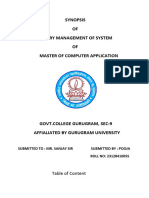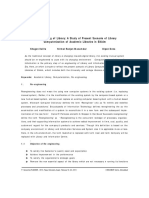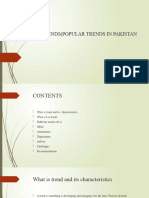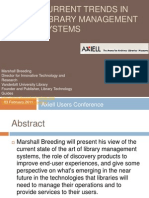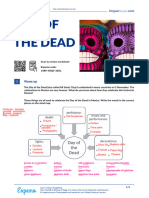0% found this document useful (0 votes)
5 views4 pagesOther Computerized Library Services
Computerized Library Services utilize digital technologies to enhance library operations, including cataloging, circulation, and access to e-resources. Key components include Library Management Systems, digital cataloging, and self-service facilities, which improve user experience and administrative efficiency. Future trends suggest further integration of AI, voice search, and data analytics to optimize library services.
Uploaded by
mercyaro1981Copyright
© © All Rights Reserved
We take content rights seriously. If you suspect this is your content, claim it here.
Available Formats
Download as DOCX, PDF, TXT or read online on Scribd
0% found this document useful (0 votes)
5 views4 pagesOther Computerized Library Services
Computerized Library Services utilize digital technologies to enhance library operations, including cataloging, circulation, and access to e-resources. Key components include Library Management Systems, digital cataloging, and self-service facilities, which improve user experience and administrative efficiency. Future trends suggest further integration of AI, voice search, and data analytics to optimize library services.
Uploaded by
mercyaro1981Copyright
© © All Rights Reserved
We take content rights seriously. If you suspect this is your content, claim it here.
Available Formats
Download as DOCX, PDF, TXT or read online on Scribd
/ 4

















